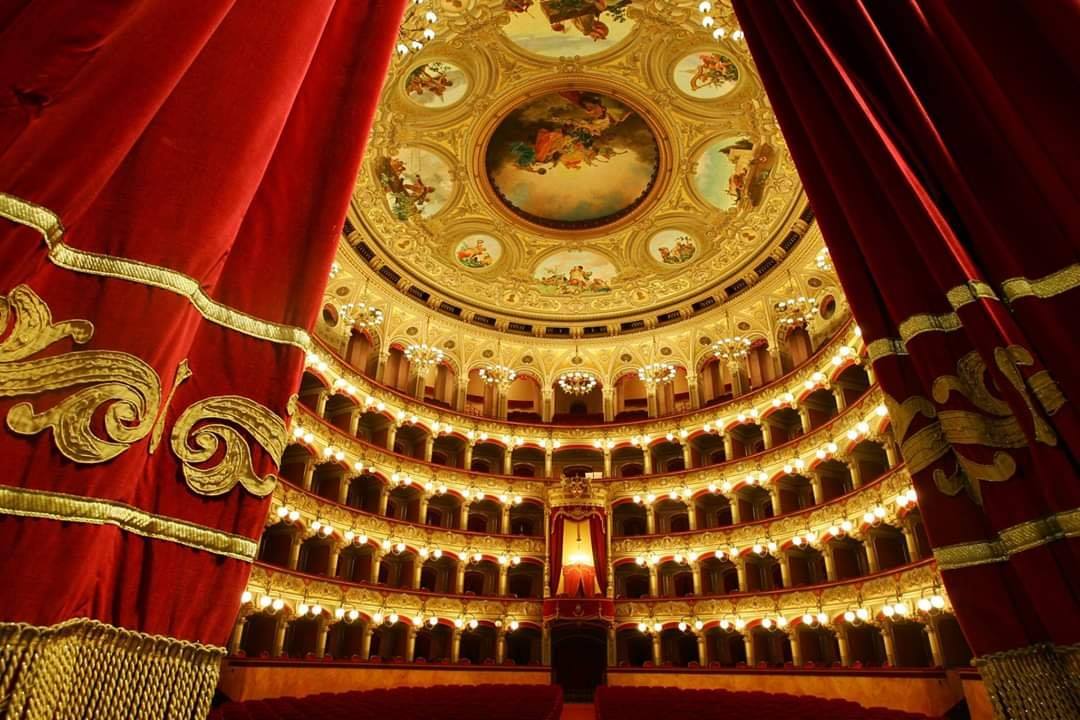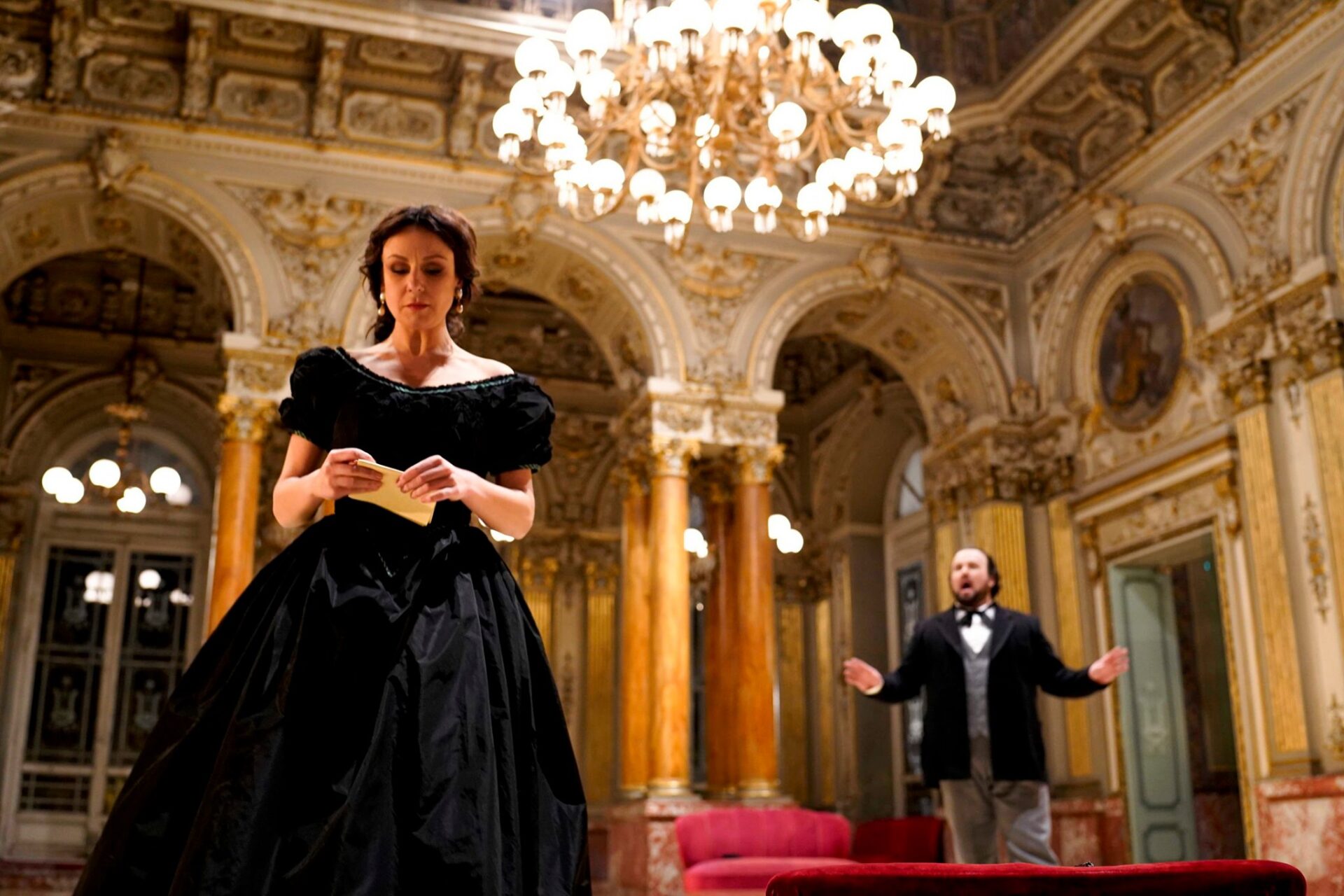Teatro Massimo Bellini
Teatro Massimo Bellini is an architectural masterpiece. A few steps north of the Palazzo Della Cultura (Palazzo Platamone) we can find one of the most picturesque squares of Catania, the Piazza Vincenzo Bellini. The square takes its name from the marvelous theater that dominates it, which in its turn is named after the famous composer Vincenzo Bellini, whose short but triumphal career places him among the greatest of its kind. The Bellini Theater was inaugurated on May 31, 1890, with the opera play Norma by Vincenzo Bellini.
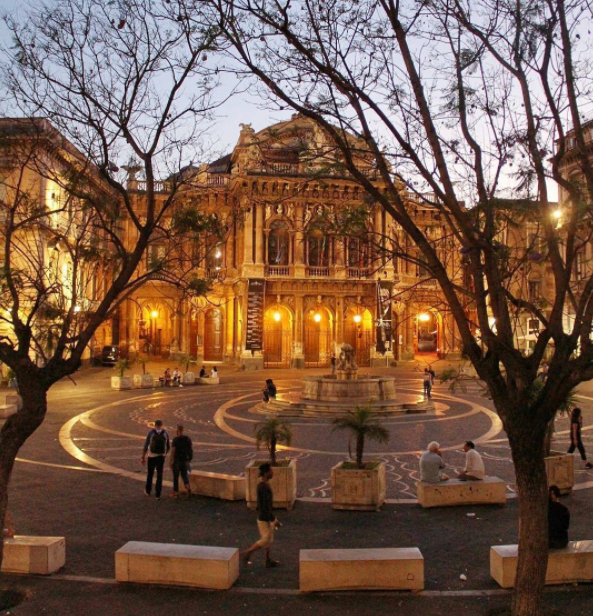
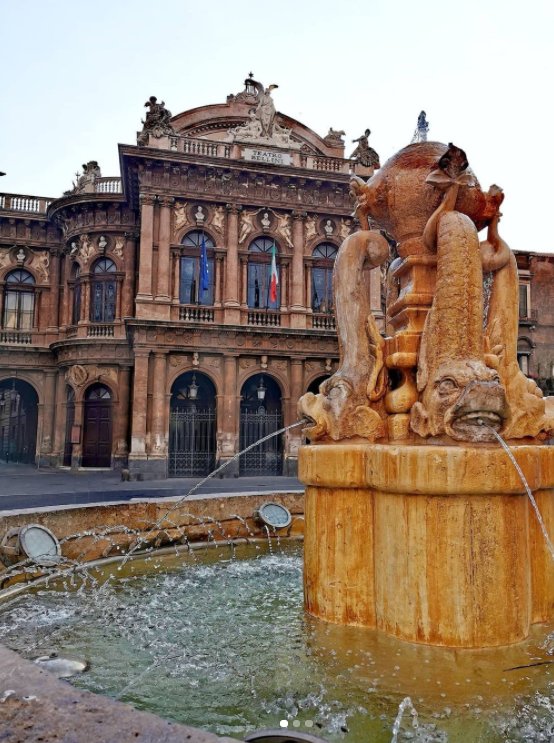
The building is the work of Carlo Sada who trained in Rome and arrived in Catania following Andrea Scala, his teacher in 1880. The style of the Catania theater is inspired by the French eclecticism of the second empire and the works of Charles Garnier like the Paris Opera. The façade of the Bellini Theater is full of ornaments and allegories; the entrance porch for the carriages is very elegant, closed by iron gates.
The interior is characterized by a large hall, with excellent acoustics, four tiers of boxes, and a gallery. All around the spaces have been used to create elegant corridors, lounges, and the foyer, inside which is a beautiful monument to Vincenzo Bellini. The ceiling frescoes are by Ernesto Bellandi; in 1883 the painter Giuseppe Sciuti painted an antependium that tells of a legendary victory of the Catania people over the Libyans.

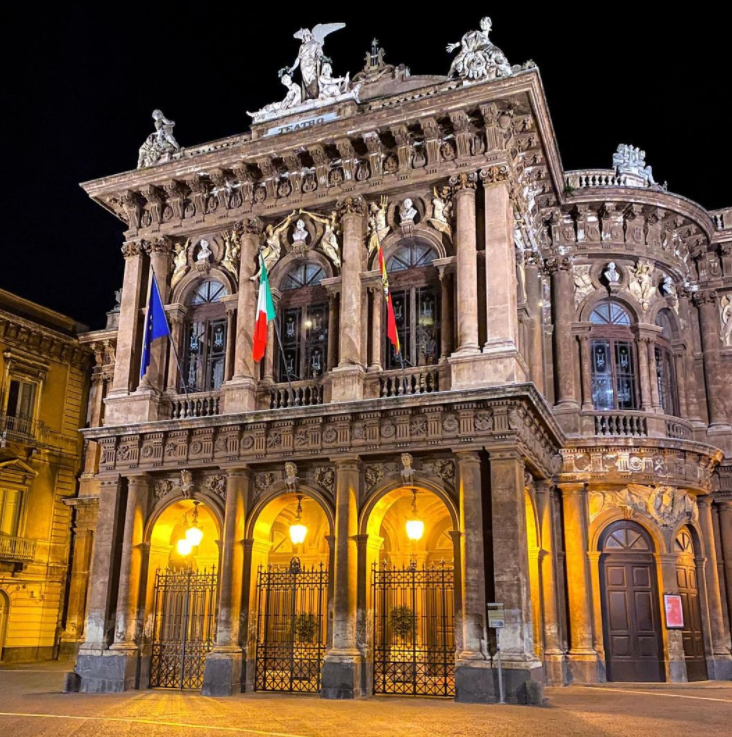
One of the major concerns of the Sada was to connect the theatrical building with the surrounding urban environment: the architect writes in his report after the completion of the project “we would say that both the front portico and those next to it, also serve public circulation and only on the evenings of the plays will the circulation of carriages be regulated to best suit the service of the theater.”
In addition to the overpasses, which would have joined the building to the surrounding palaces, Sada also thought of the monumental arrangement of the square, proportionate to the solemnity of the façade of the theater. In the center, the architect imagined placing a large monument to Vicenzo Bellini, the same one that the Municipality had commissioned from the sculptor Monteverde (today this monument is located in Piazza Stesicoro). More
